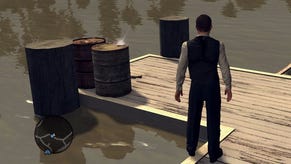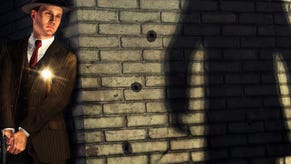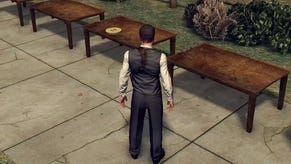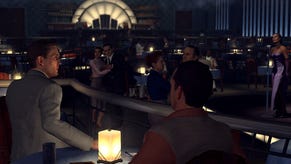LA Noire's Switch port tested: could the system handle GTA5?
Rockstar's debut Switch offering reveals the challenges facing a potential port.
The LA Noire remaster is available on PS4, Xbox One and their 4K mid-gen refresh equivalents, but the real story here is the Switch port and the fact that it's the first time we've seen an open word game of this type running on Nintendo's hybrid system. It's also Rockstar's debut title for the console, and we can only wonder what else the publisher has cooking for the system. Could the Grand Theft Auto games be in development for Switch? Is it even possible to successfully port those titles? The LA Noire conversion doesn't have all the answers, but it convincingly reveals some of the challenges any prospective GTA conversion might face.
As things stand, the original LA Noire was built on a custom engine designed with PlayStation 3's Cell processor in mind, and this version was the preferred console edition back in the day. It was quite a sight: PS3 managed to run a massive open-world built around an impressive facsimile of Los Angeles, with fully functioning day-night cycles, weather, physics, wandering NPCs and traffic systems. All this meant a heavy reliance on the machine's unique synergistic processing units - SPUs - and the end result is that the Switch version, reliant on just three available ARM CPU cores operating at 1GHz, can suffer from some obvious drawbacks.
But let's start with the good news. On Switch, you get a fully playable version of LA Noire, with a large, detailed world to explore - unlike anything we've seen before on a handheld. Surprisingly, this also renders at 1920x1080 when connected to a TV via docking - much like the base PS4 release, in fact. However, a dynamic resolution technique is in play, meaning Switch scales the pixel output based on rendering load - and at stress points that means a low point of 1440x1080. In other words, the game lowers its resolution on the horizontal axis alone, and faced with a busy street, it drops to 75 per cent of the full pixel-count overall. Still, even at 1440x1080, Switch is still resolving far more detail than PS3's native 1280x720.
Interestingly, Switch's portable mode uses a similar technique. You get a native 1280x720 on Switch to match its screen, giving it the same resolution as a PS3. However, the game will again scale down to 75 per cent of this on the horizontal axis - to 960x720 - when it needs to. In terms of last-gen comparisons on a big open world game, the takeaway is that when docked, Switch has GPU horsepower to spare, but developers need to be creative on the handheld side of things - aspects that would likely translate to a prospective GTA port too. However, Switch has a more modern GPU, and it has access to an improved, remastered version of the game - and there are benefits here.
First up, there's an upgrade in texture quality, with the PS4 version of LA Noire offering a revamped range of artwork across all areas of the game. The Switch release is a mixed bag in this sense, in that it tends to use PS3-grade textures for the environment characters and cars objects. Across the board, it's usually a close match - but there are also spots where it's clearly improved, most noticeably on ground textures. By and large though, Switch represents an intermediate step between PS3 and its successor in terms of the visual feature set.
Shadow quality is also improved, with the PlayStation 4 offering softer, smoother shadows while the Switch uses a similar, albeit slightly lower quality implementation. Again though, it's a big improvement over the sharp, stencil-like outlines of the original PS3 game. The upgrade in shading extends to ambient occlusion too - the docked Switch game uses a more subtle technique than the heavy-handed implementation seen in the original versions. Blankets of inappropriate shading are dismissed in favour of a more realistic approach - basically, if there's a gap between objects, it's filled lightly with shade, and characters get a very faint silhouette. It radically changes the look of the game next to the blankets of haloing found on PS3, and it's a welcome improvement. Meanwhile, the regular PS4 again adopts a similar approach to Switch, with a slightly thicker pocket of shade around objects.
Switch's enhancements represent a pretty good deal overall, but this is where the benefits stop and the downgrades begin. The fact is that this is an engine built with PS3 in mind, and the architecture of Switch is different enough that aspects of the game don't make the jump perfectly. The main disappointment is that even while docked, Switch often has worse draw distances compared to PS3. Objects like benches, fire hydrants, and small bushes fizzle into view at closer range on Nintendo's machine as you drive through the city's main streets at speed. Likewise for buildings in the distance, there's a cutback in how far afield Switch is able to render major geometry. There's never been an open world game as ambitious as this on Switch, but for our money, this is a cutback too far that does intrude on the immersion. On top of that, LA Noire doesn't quite match the sophistication of GTA, so again there are further implications here for any potential conversion of Rockstar's key franchise titles.
But despite the cutbacks, the Switch port is undeniably LA Noire, and it works. Even with the limits in draw distance, it's still a satisfying, fully-featured version of the game that plays well. It's in many ways a higher resolution version of the original, to the point where some of the PS3 game's compromises are retained. For starters, reflections all run at 15fps across the top of cars and shop windows. Just like PS3, the game runs at 30fps on Switch, but the refresh is halved down to 15fps for these elements. It only truly sticks out when you put the camera close to the car bonnet, and for perspective, PS4 runs all reflections at a full 30fps - and at a higher resolution than either Switch or PS3.

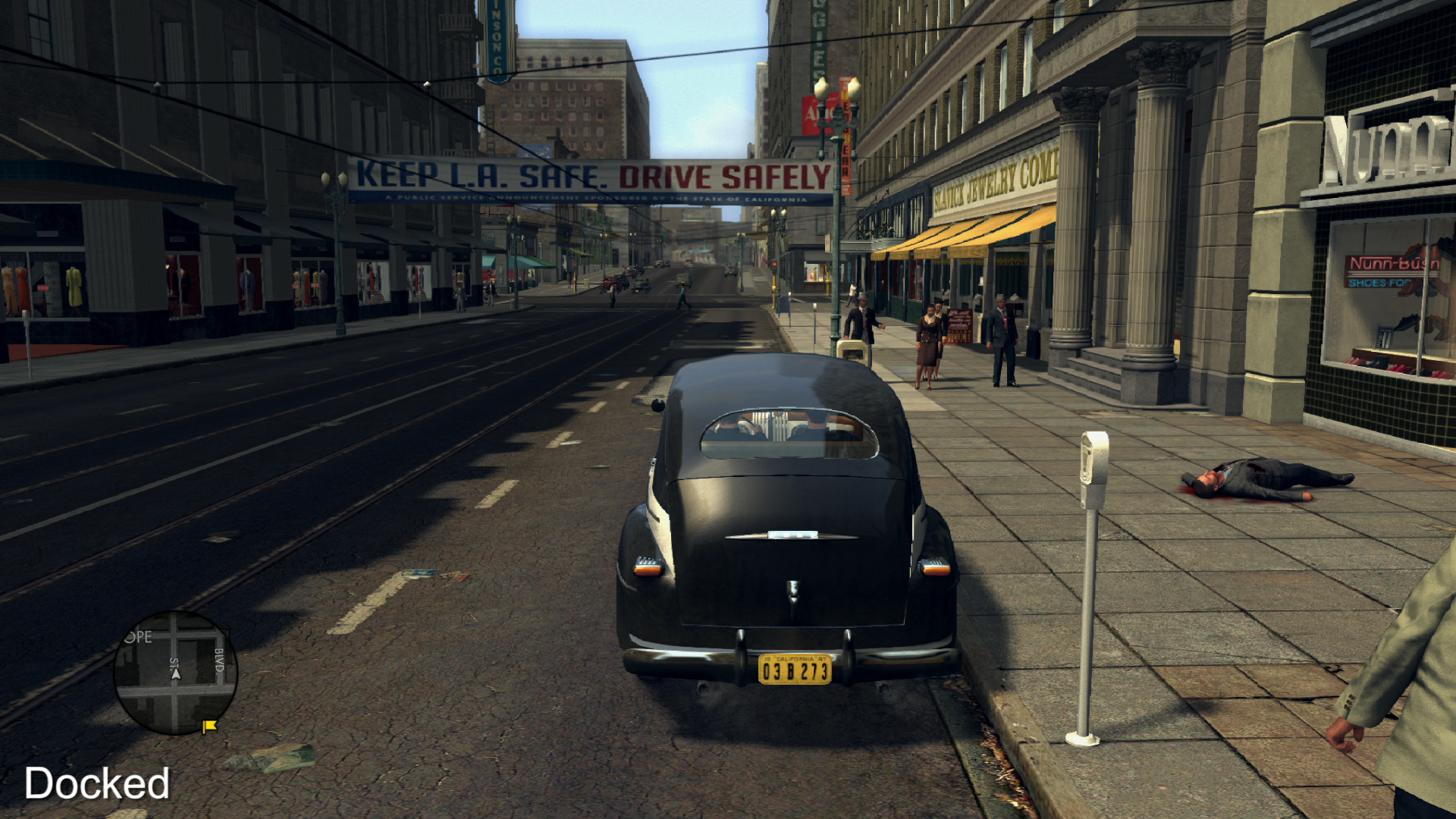
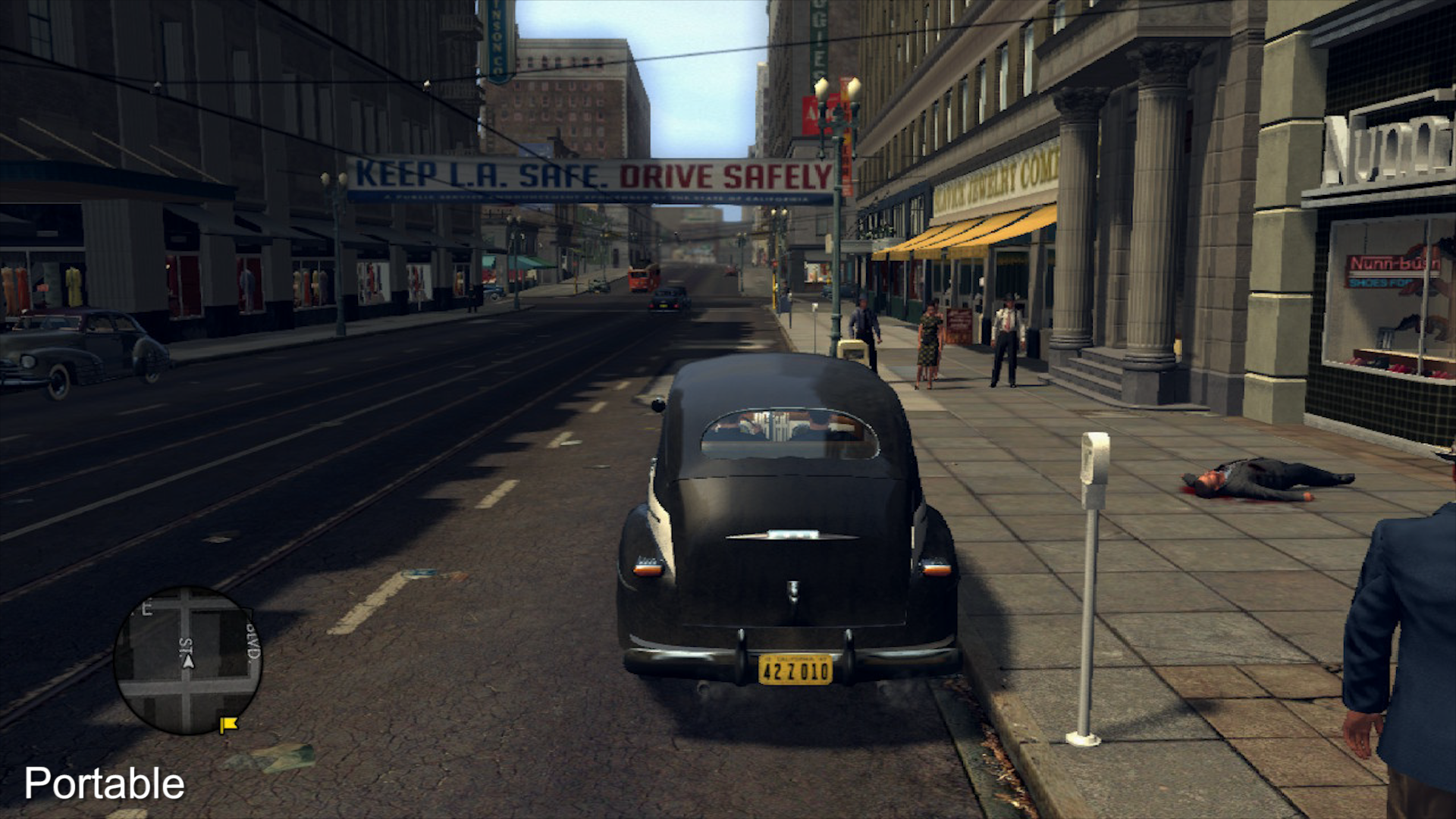
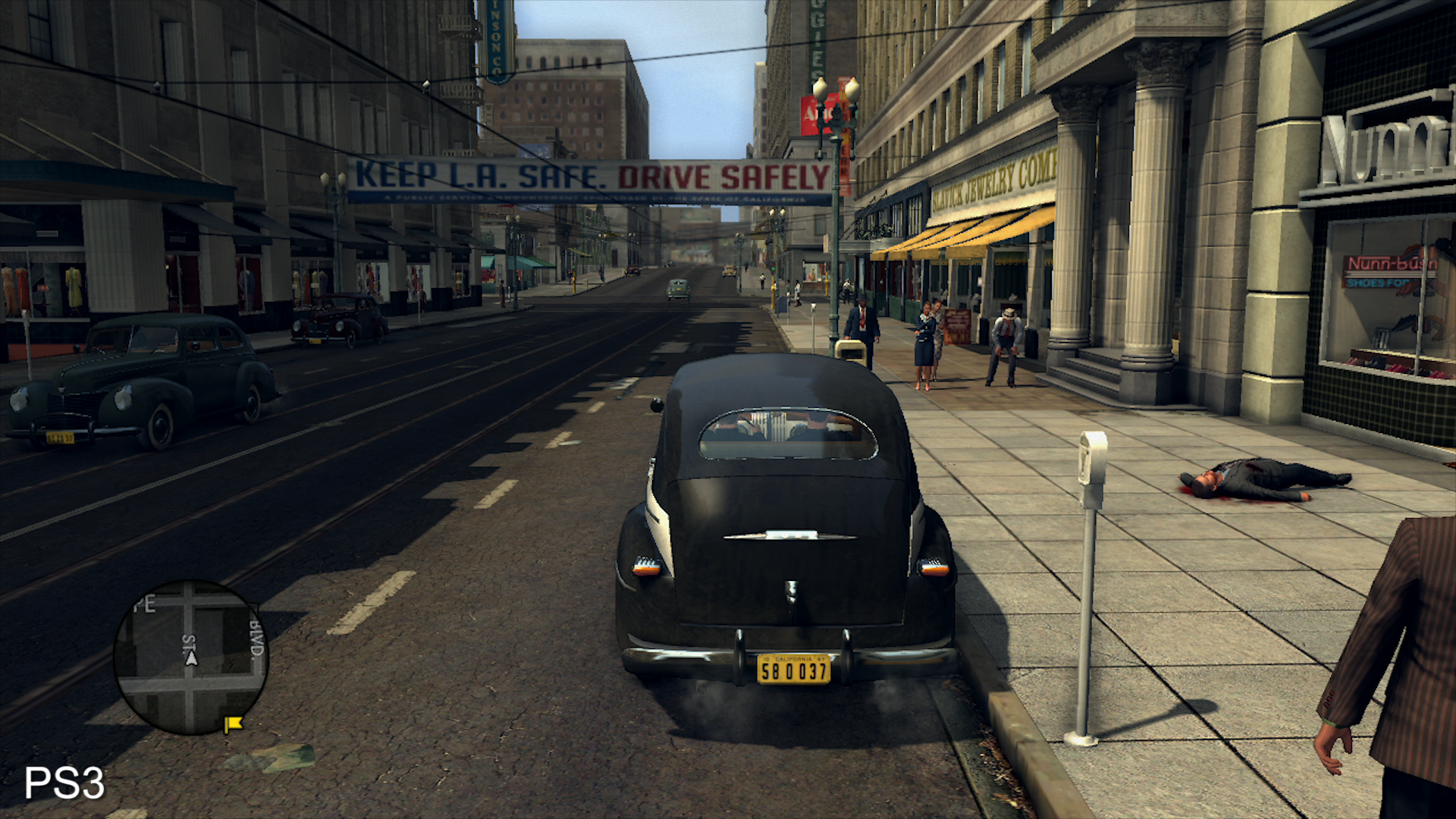

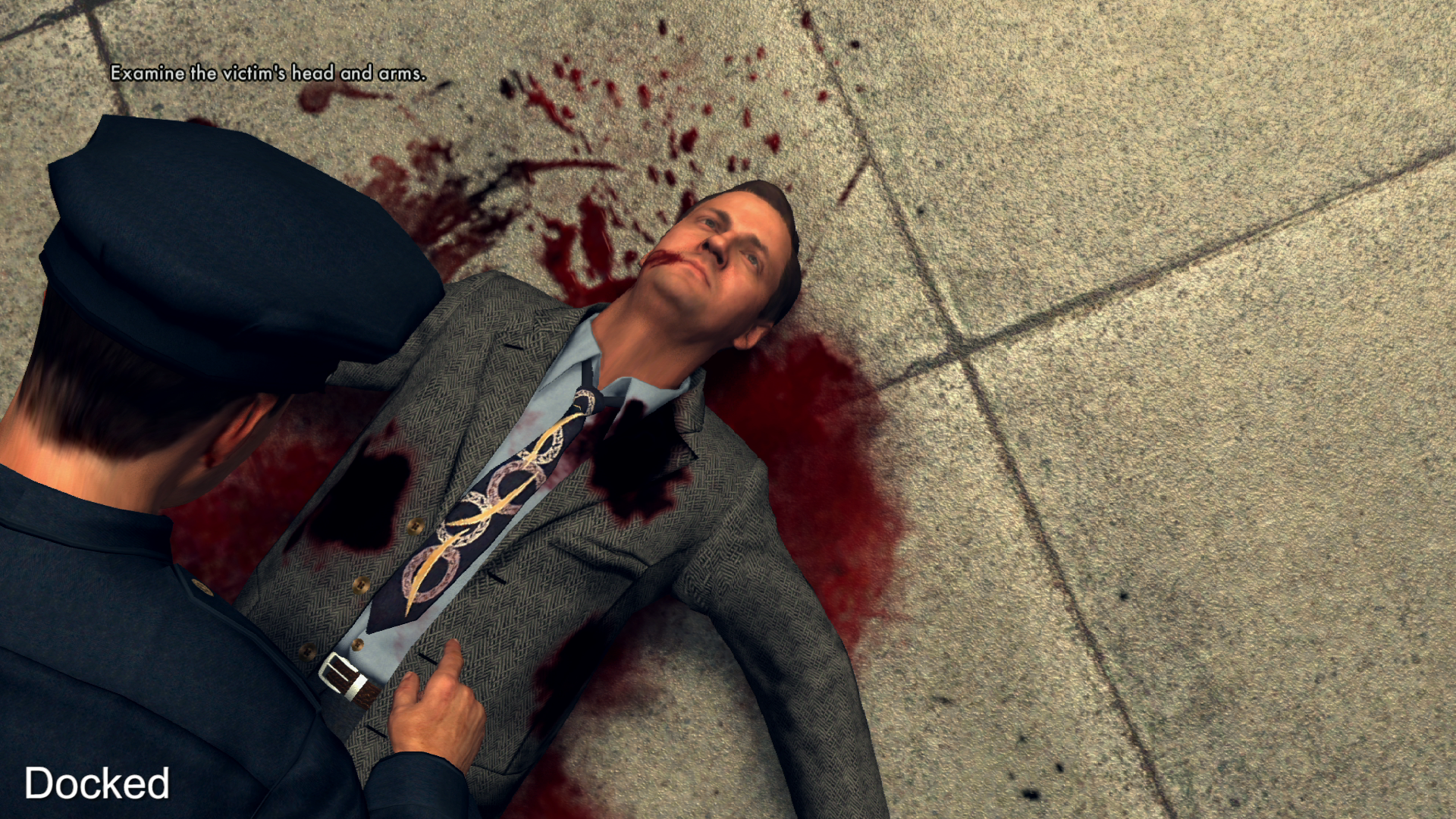

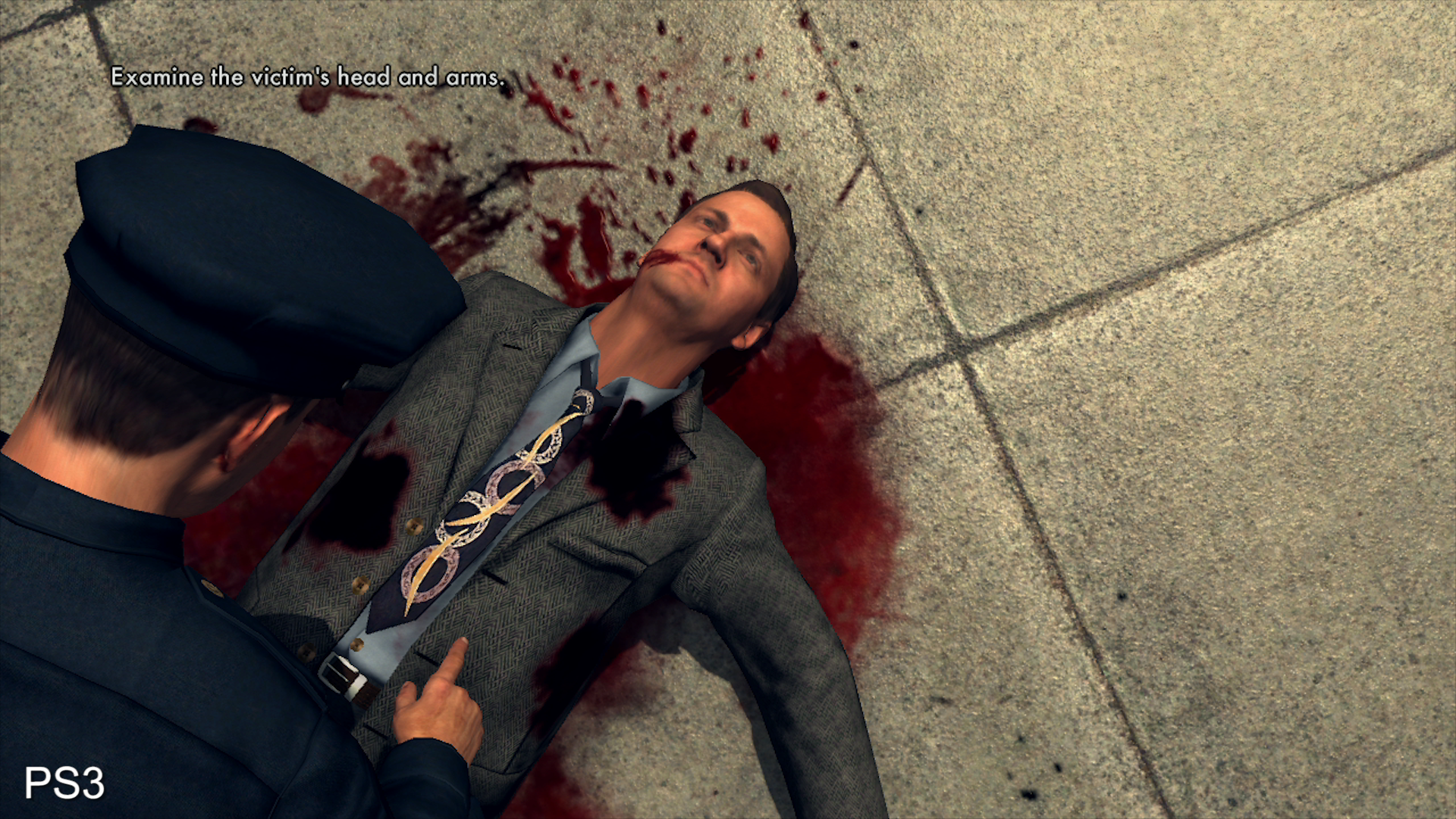



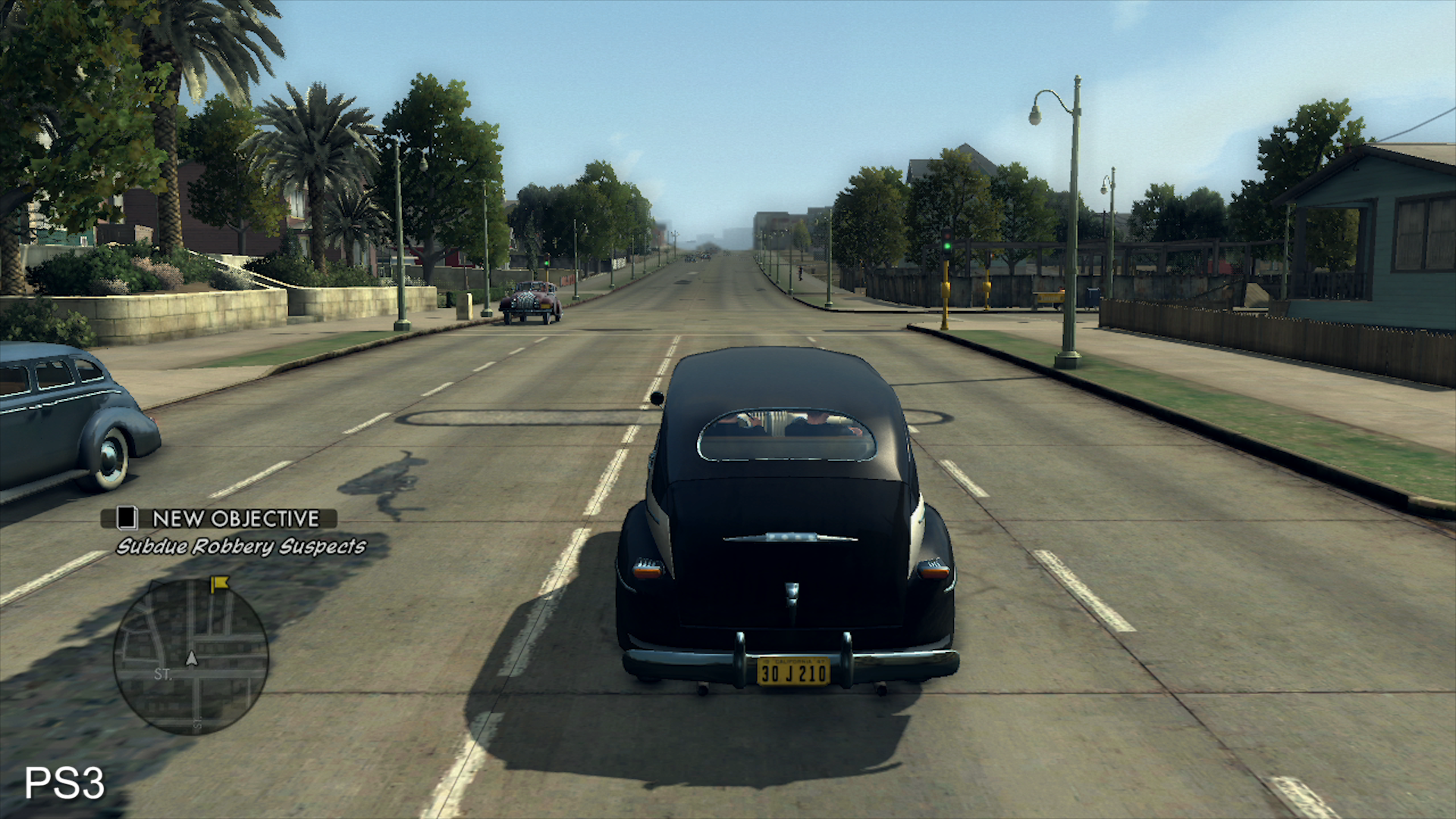
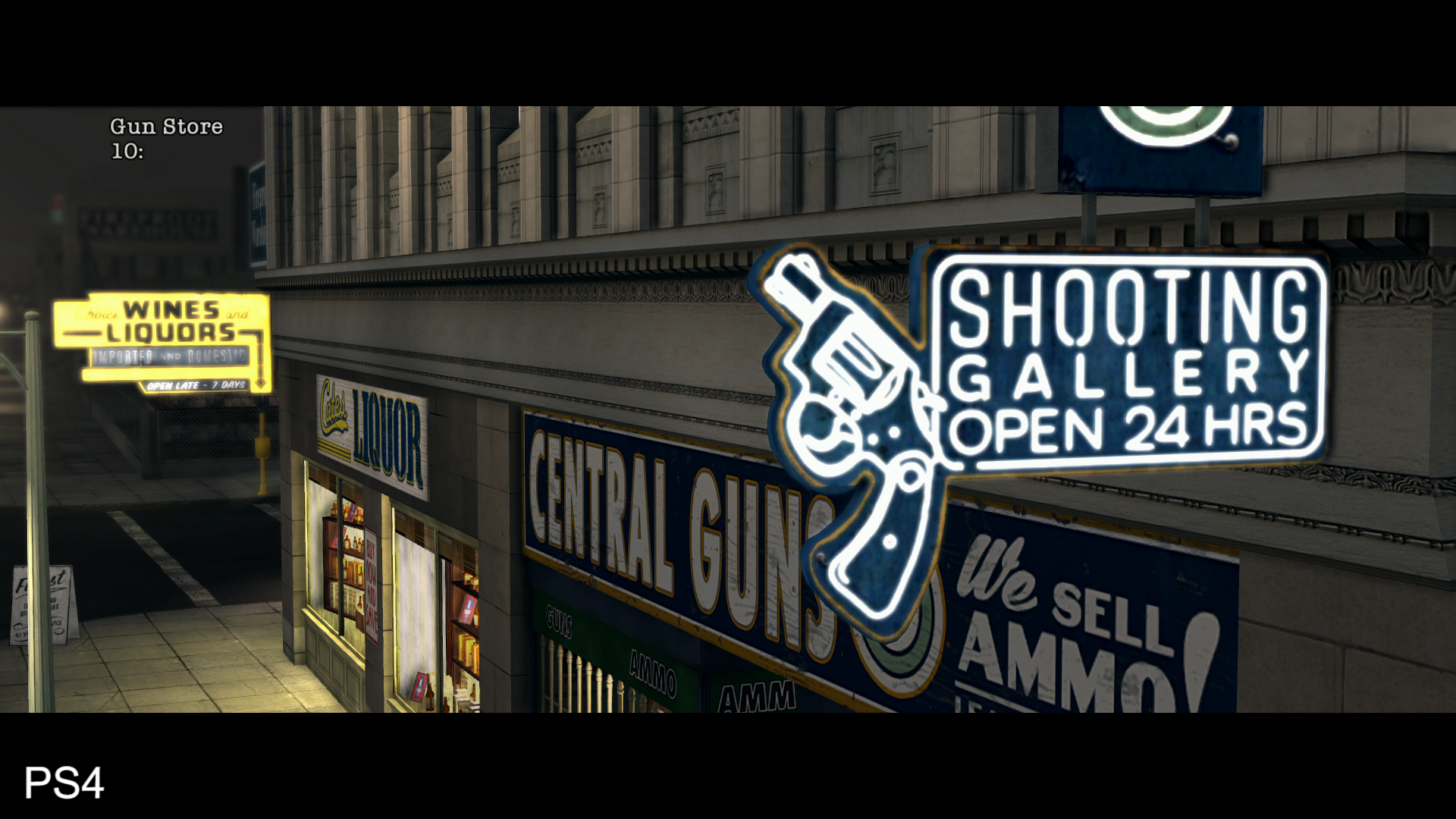
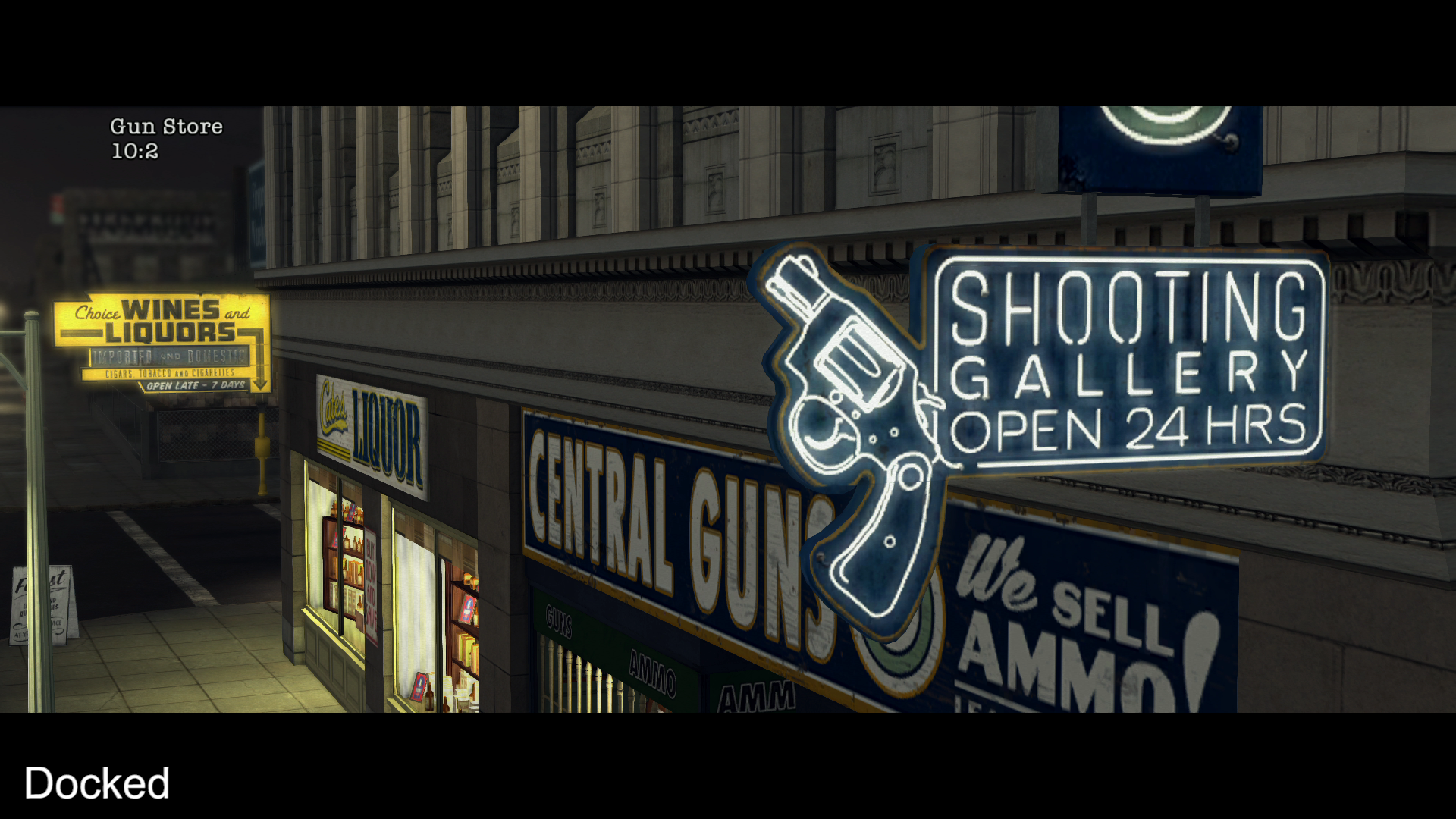
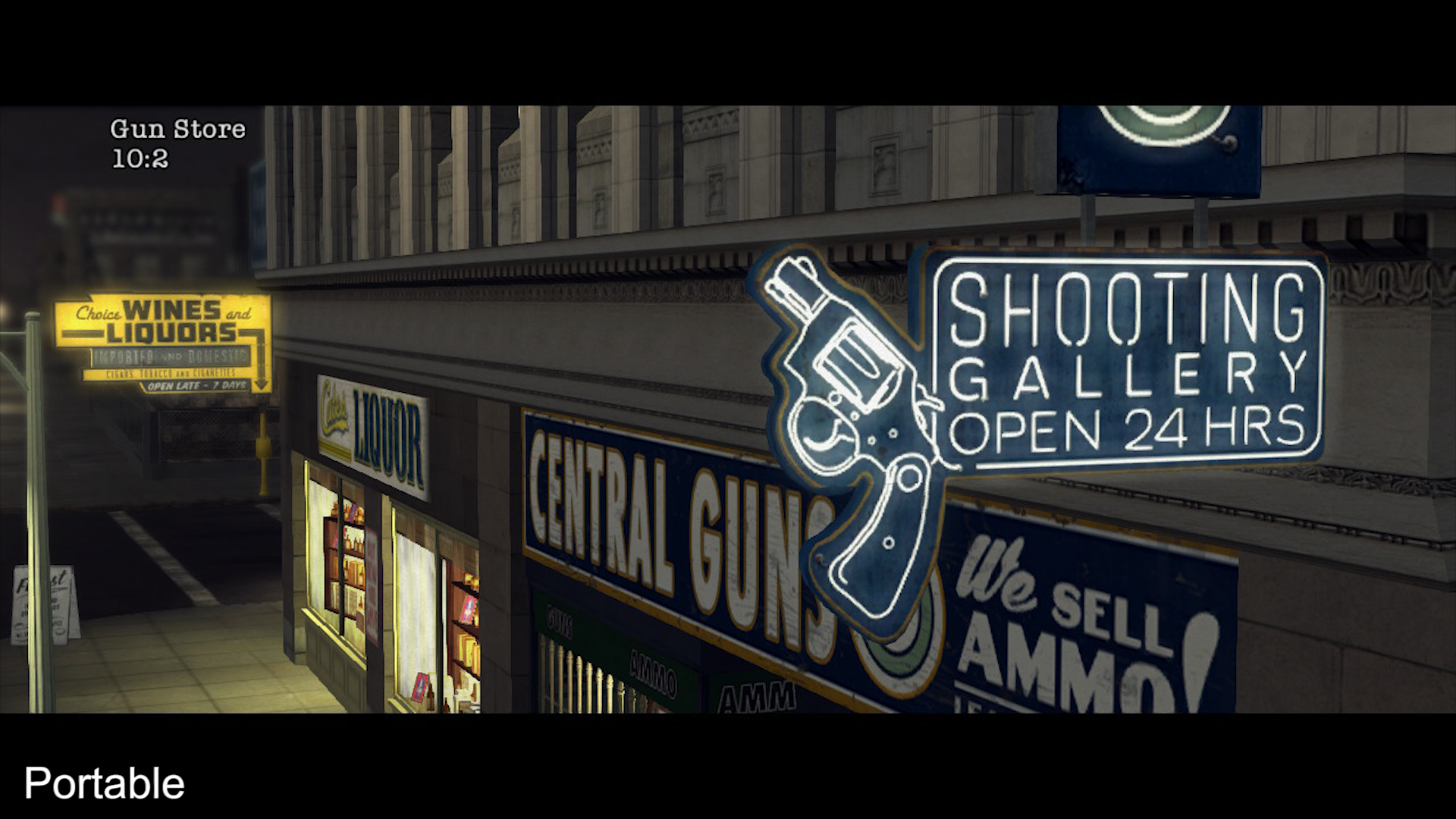
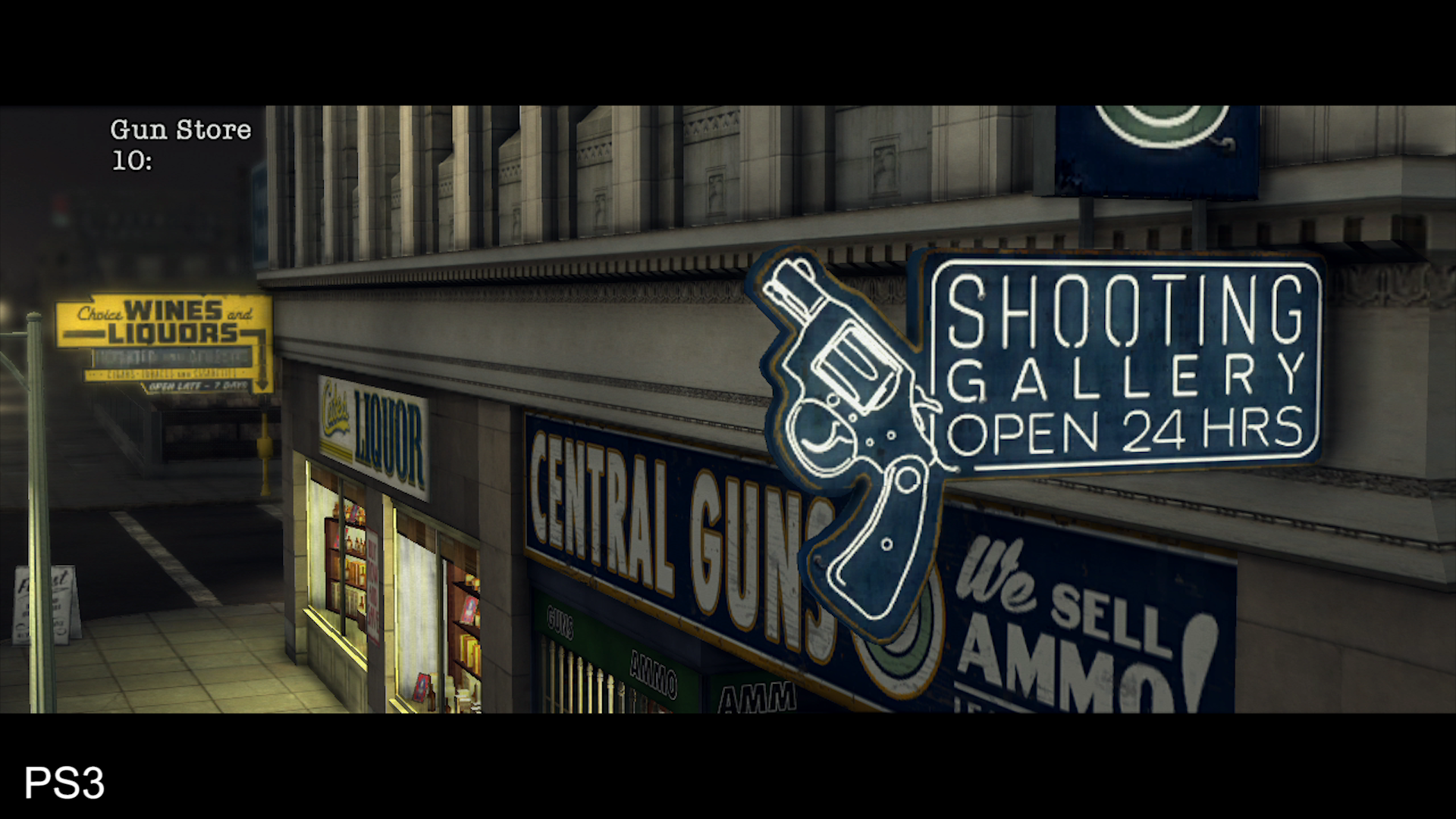

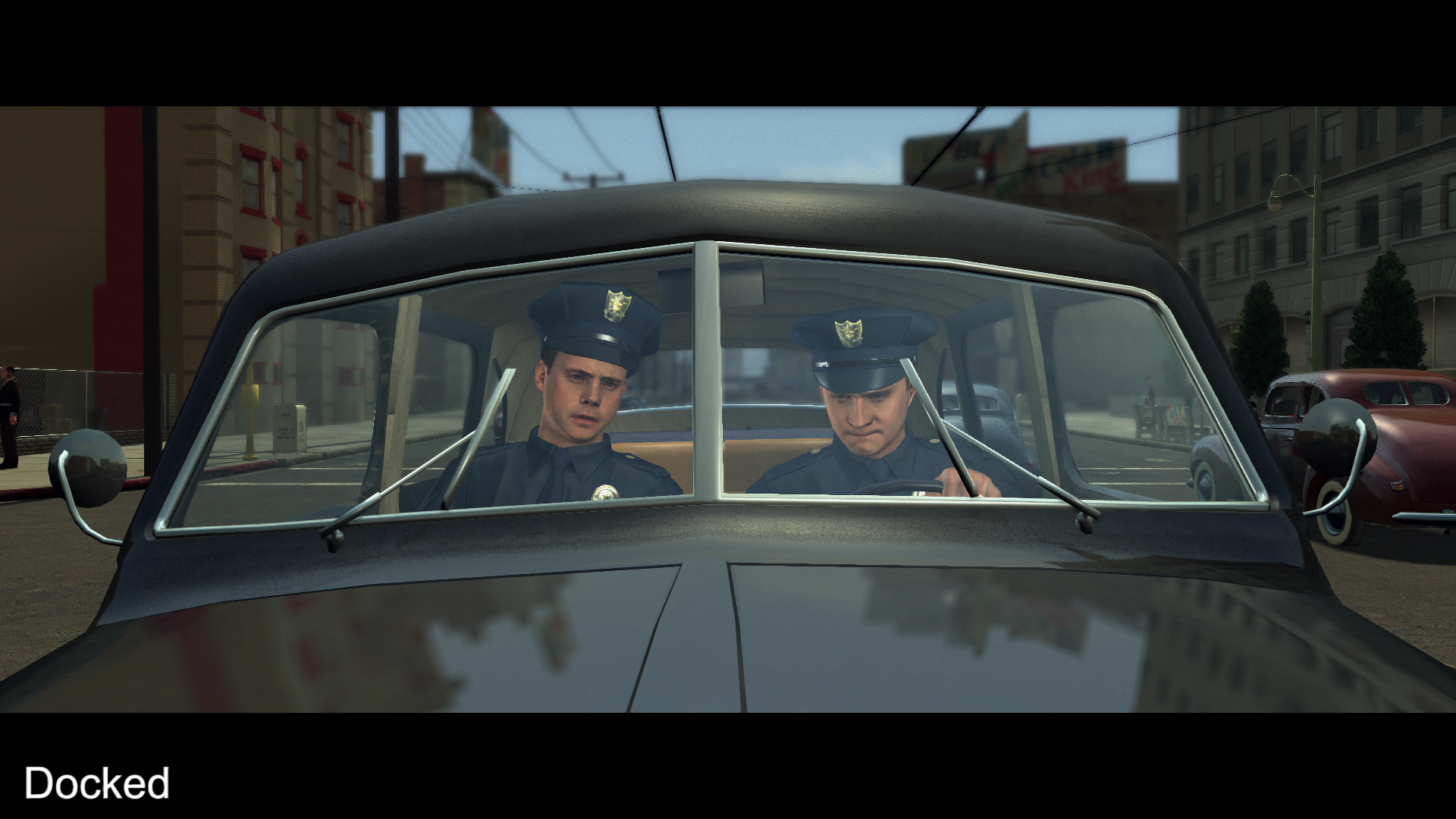
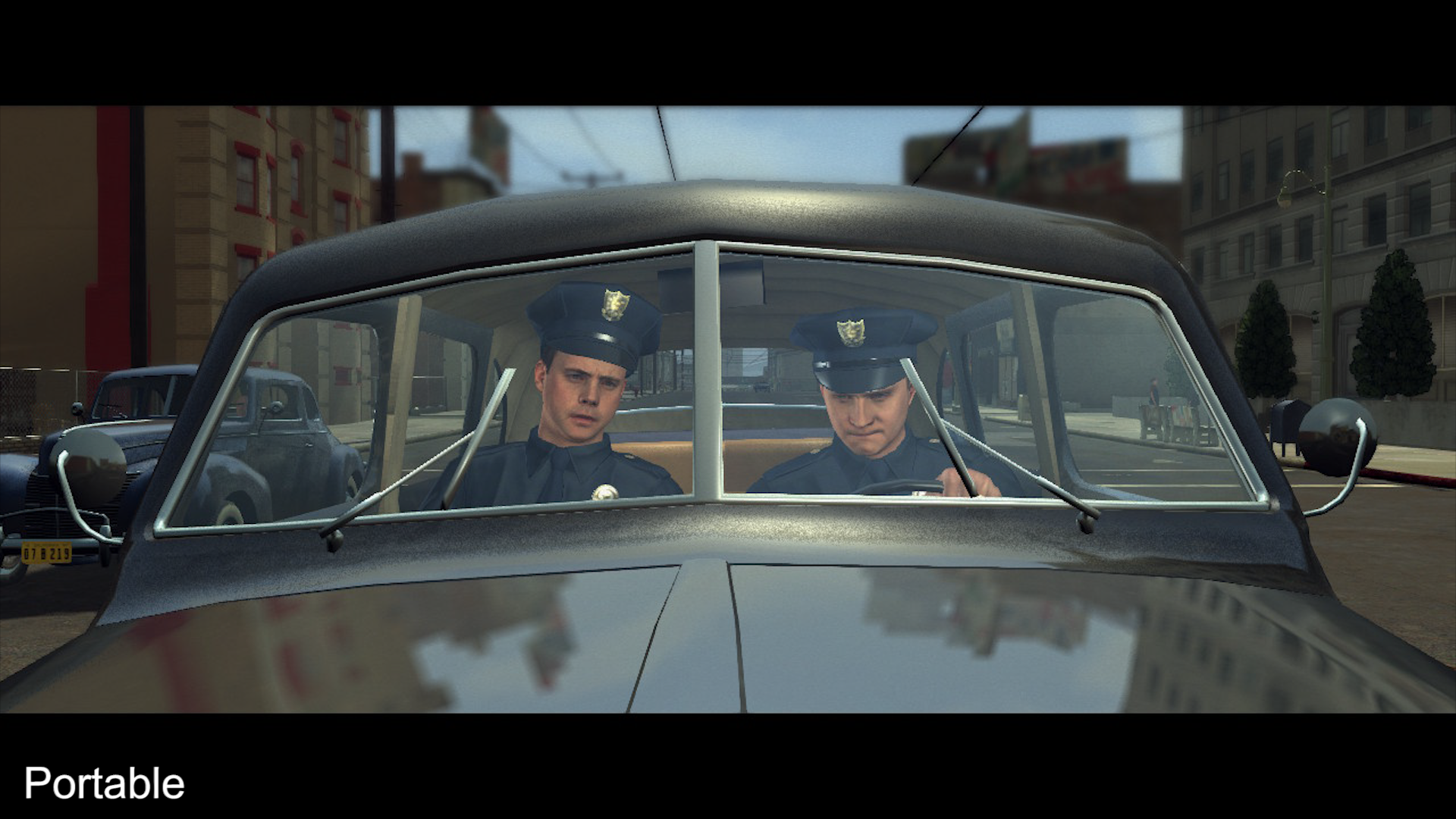
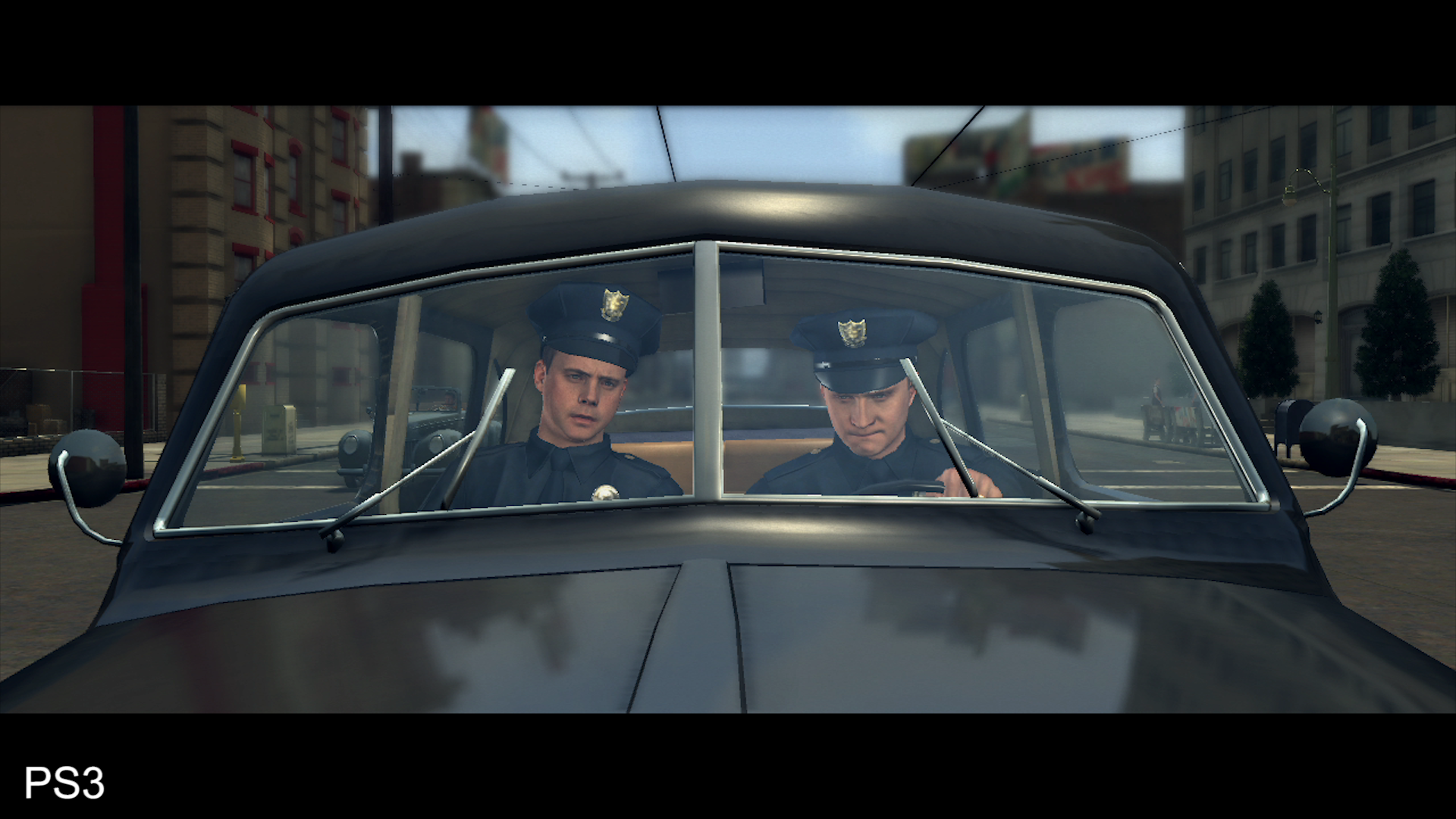
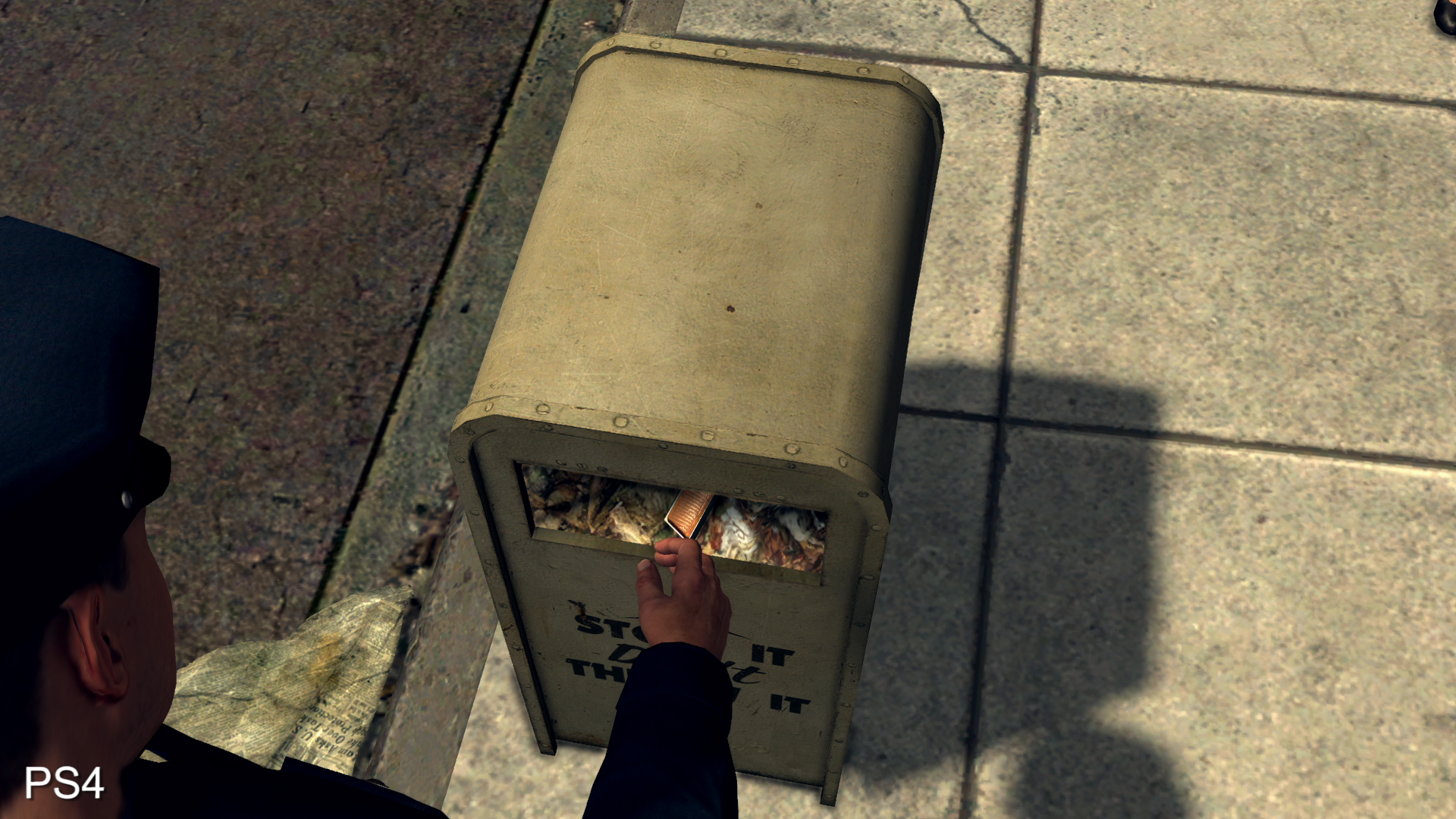



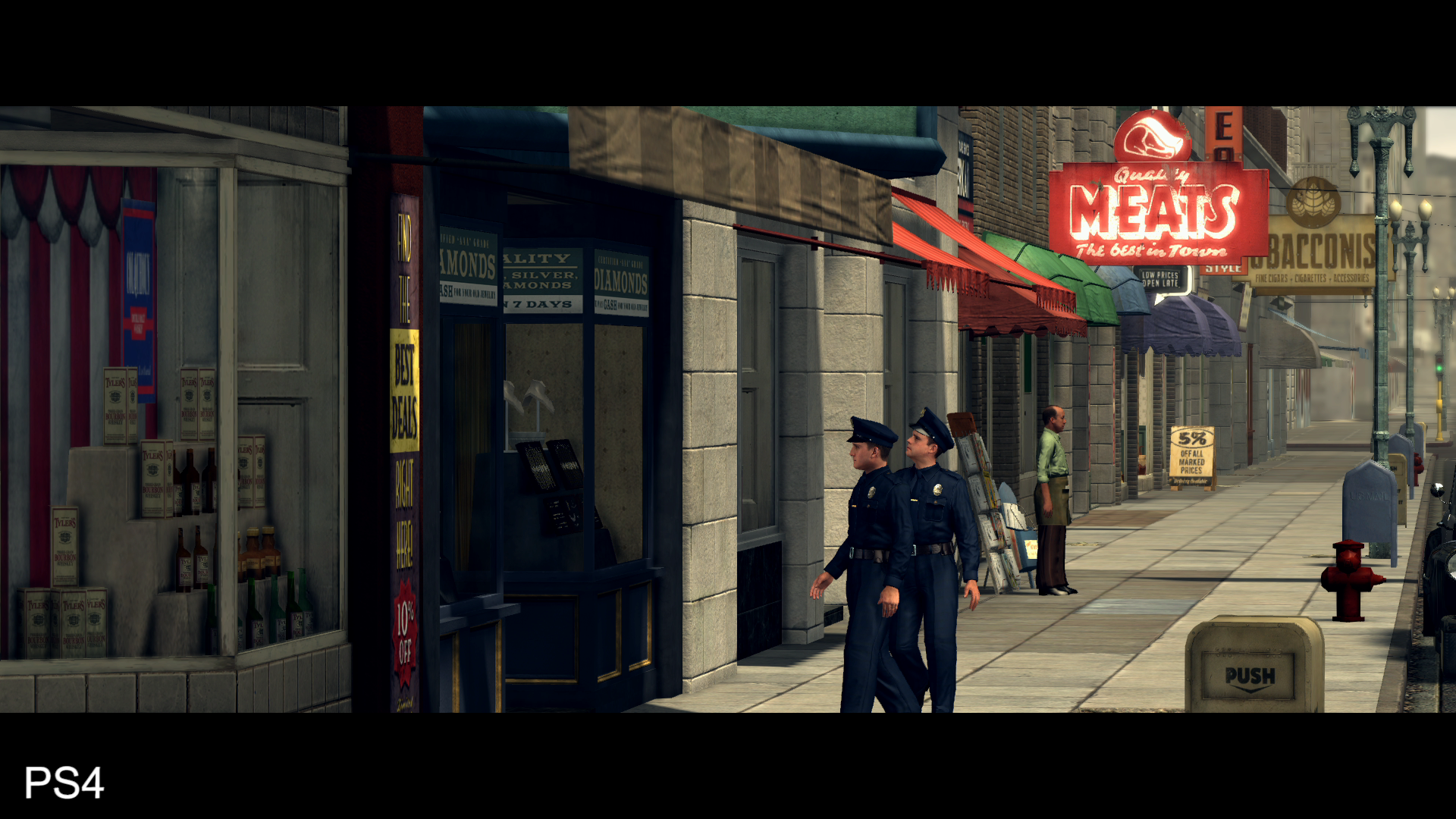
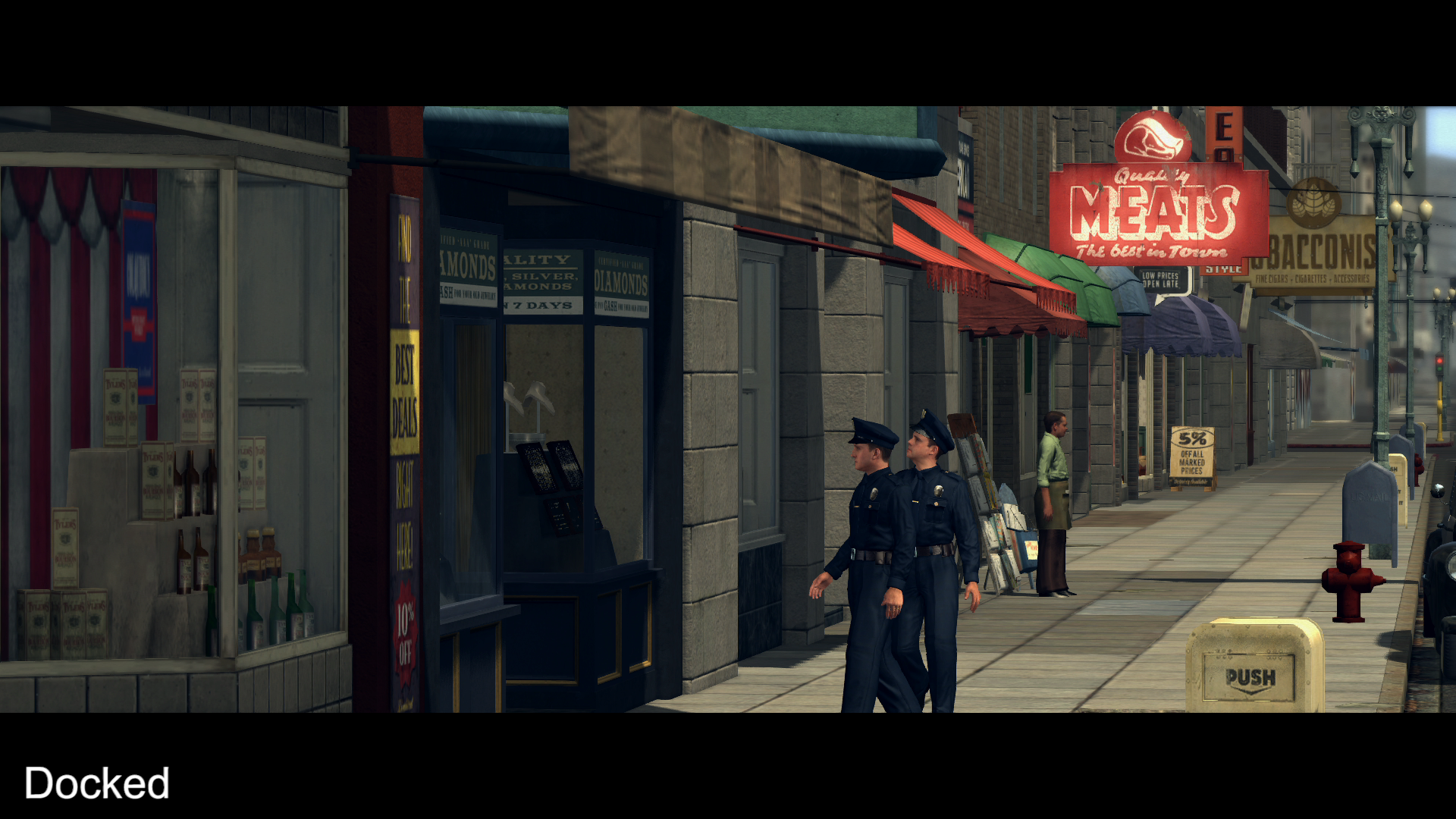
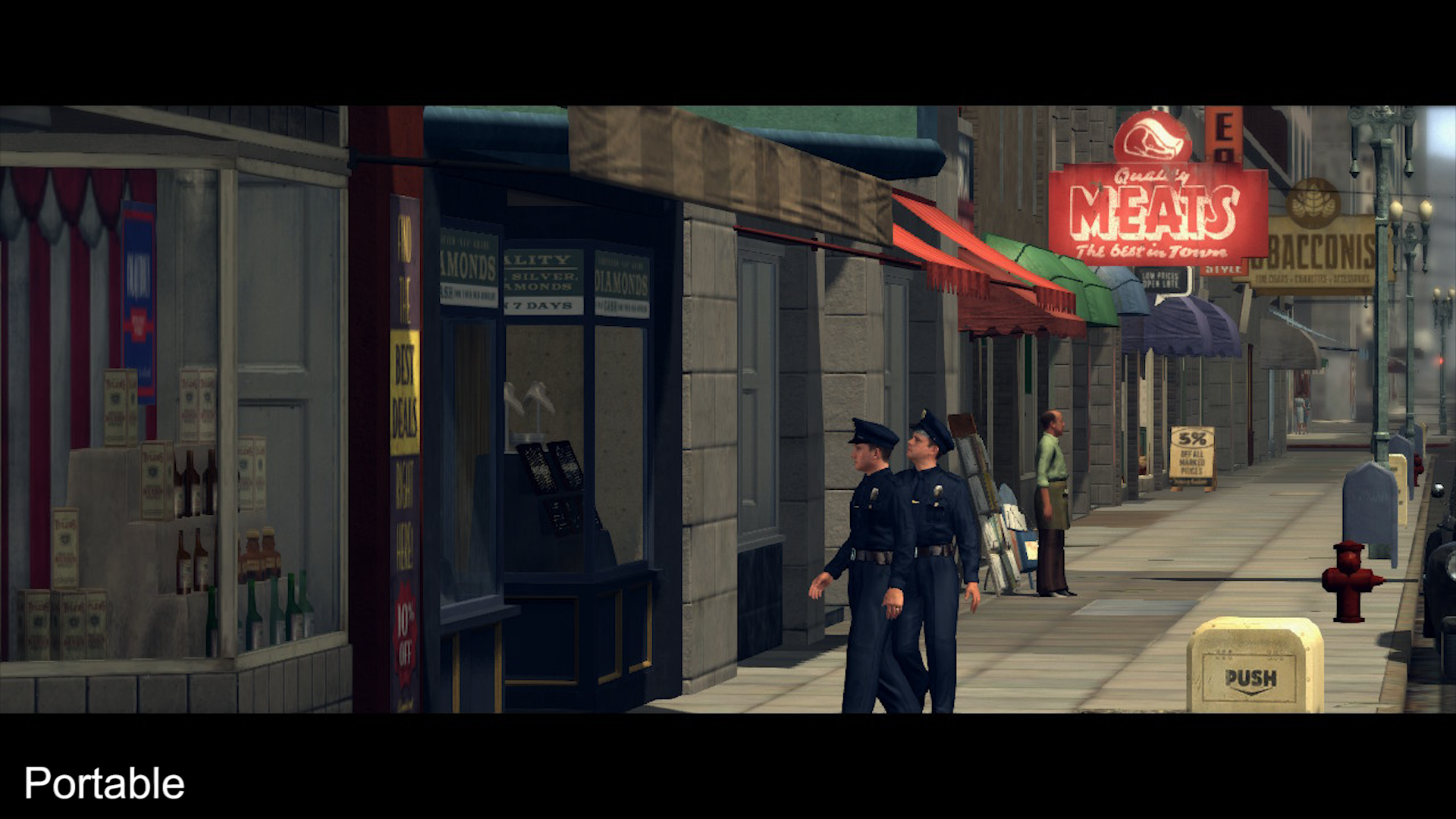
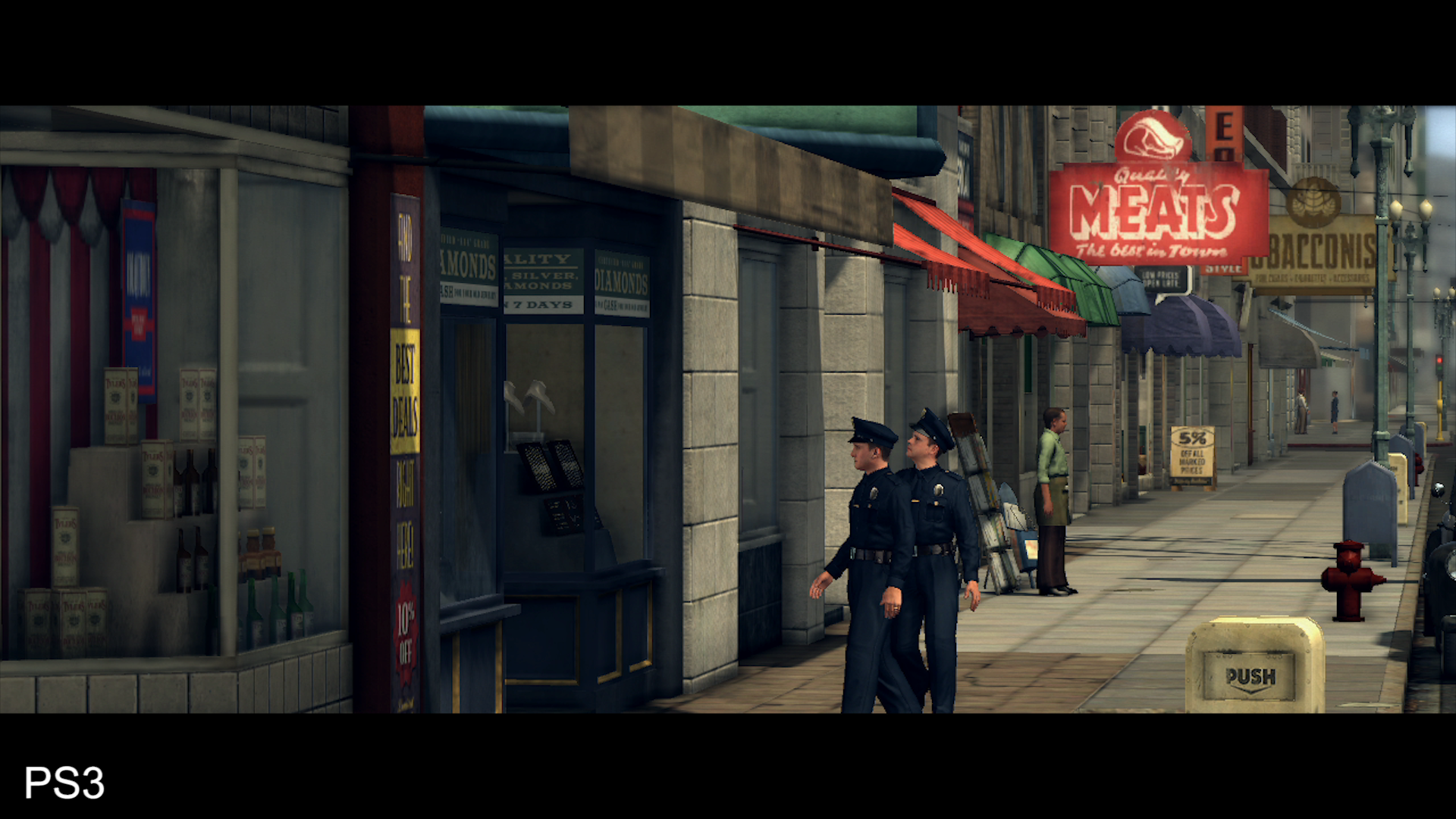

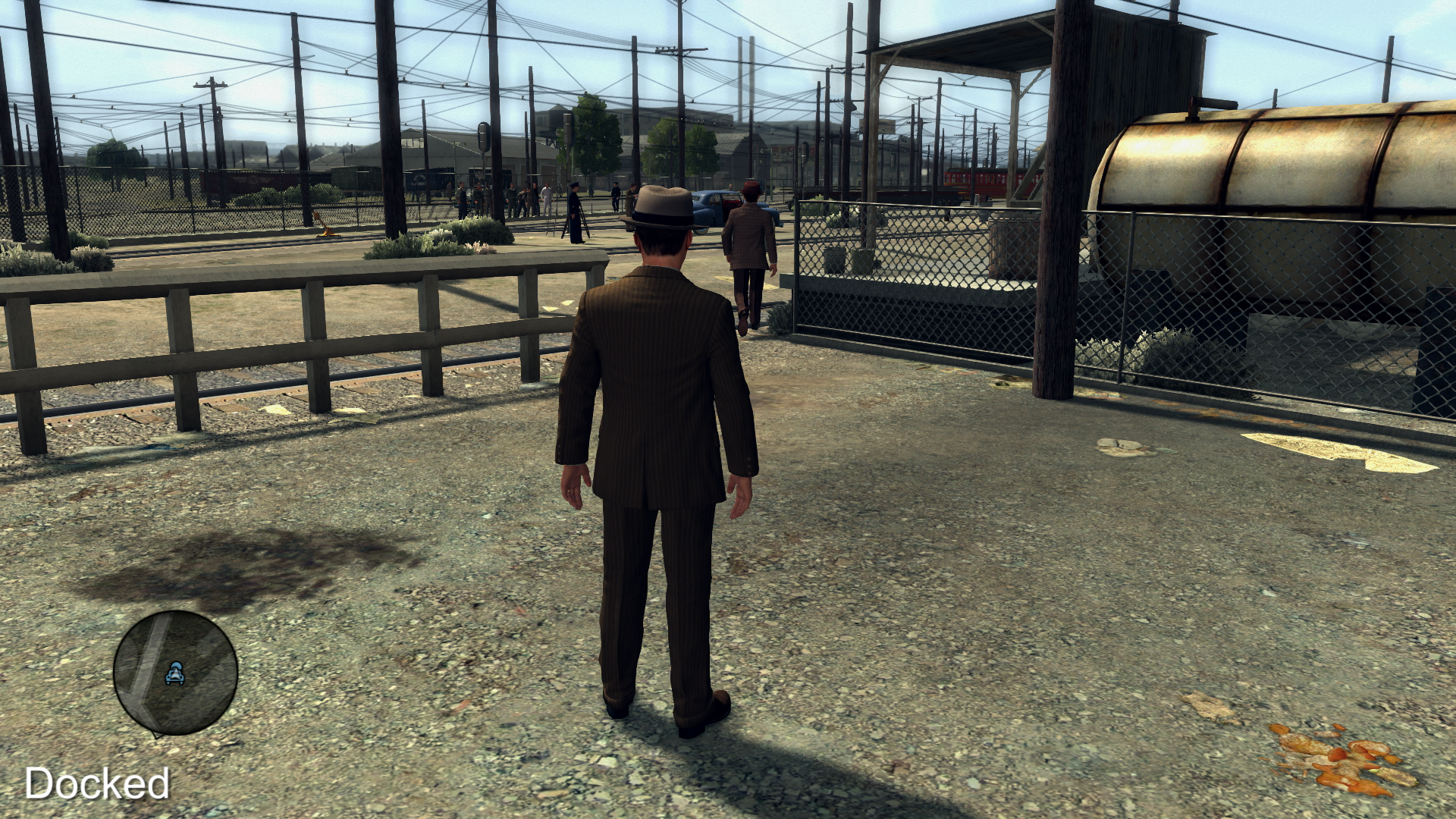
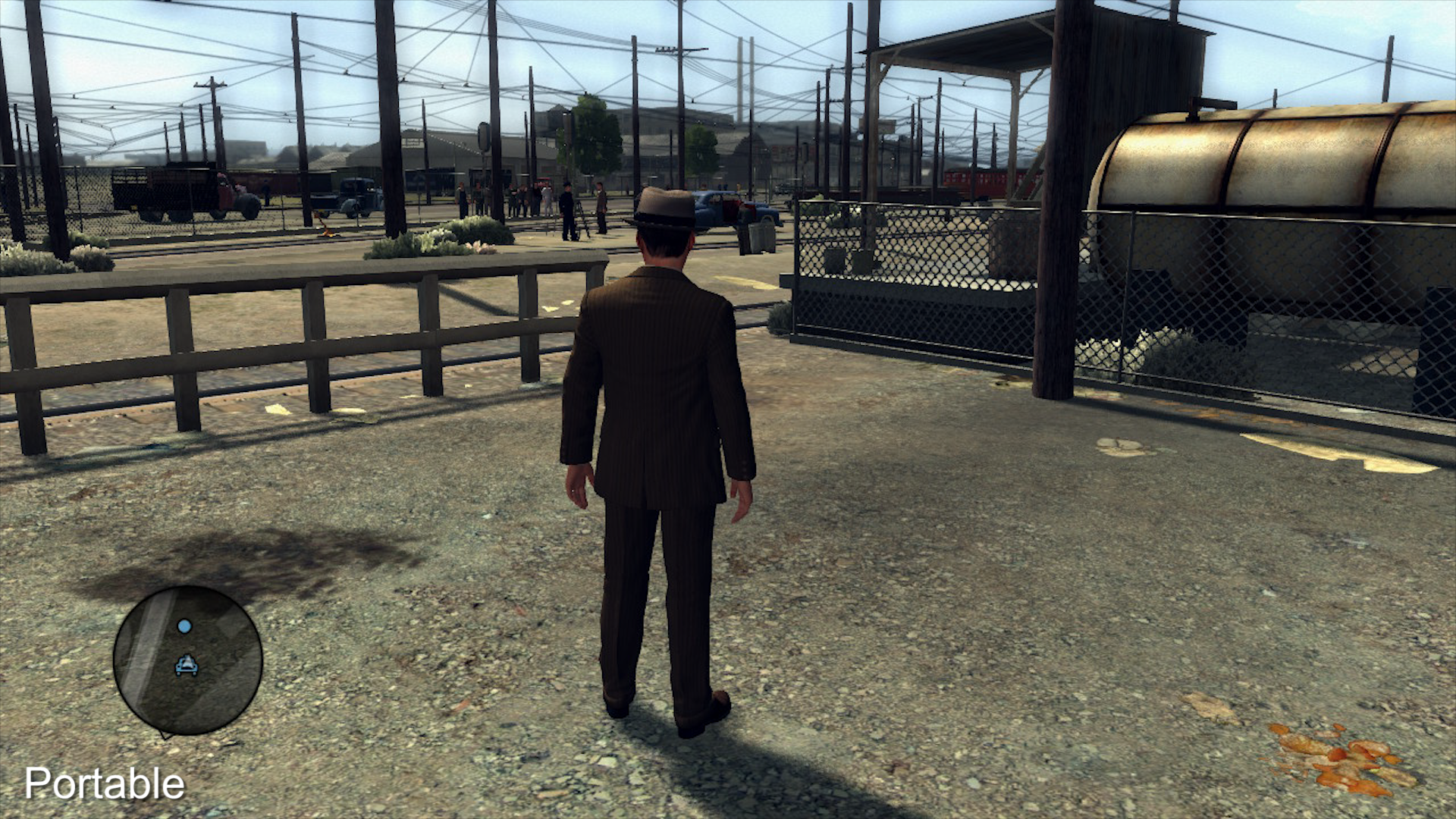
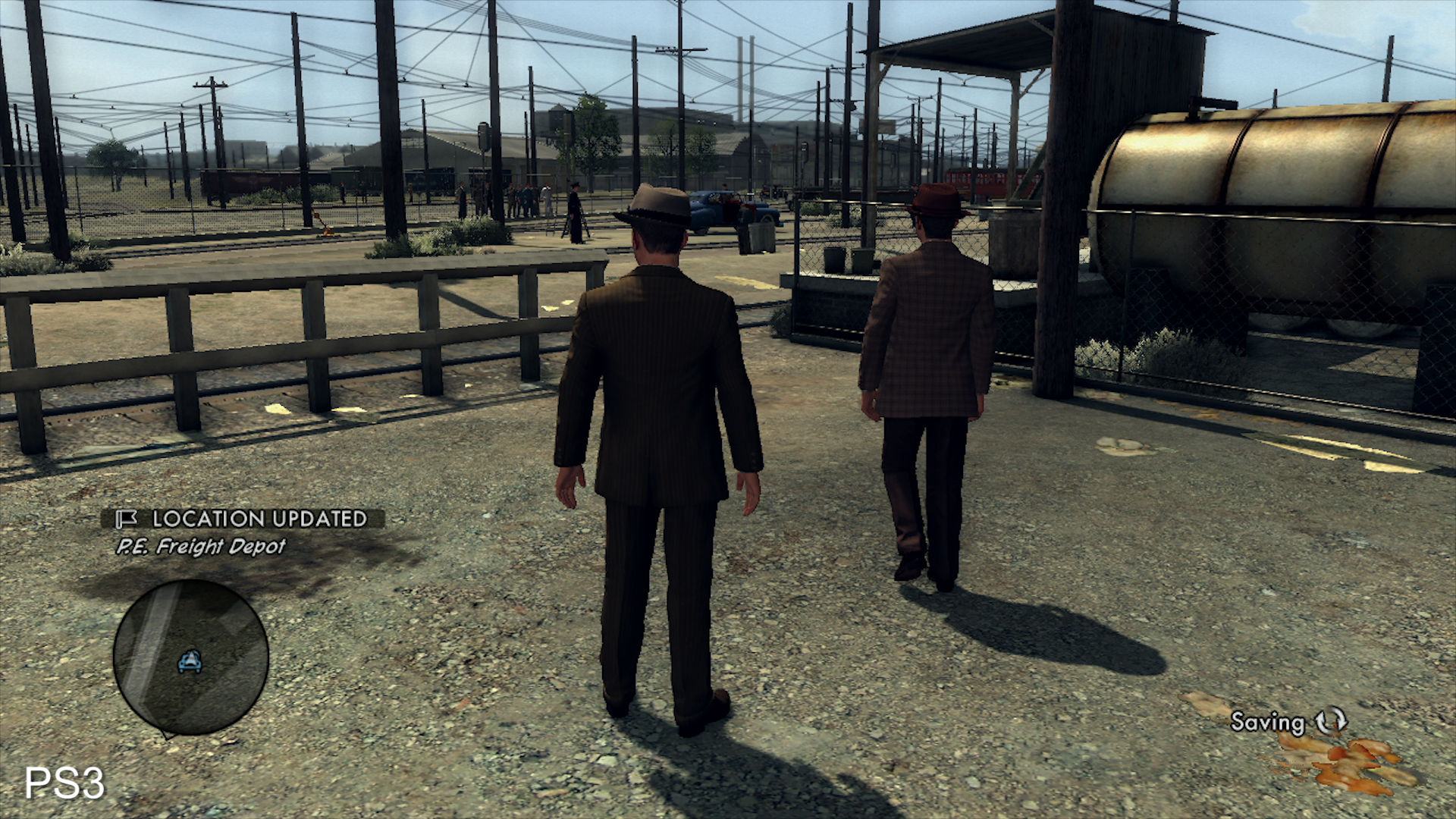
Curiously, the refresh is also halved to 15fps for NPCs in the far distance - but this goes for every version of the game, including Xbox One X. From here, the differences between versions are only slight; Switch falls short in terms of draw distance next to PS3, and of course, PS4. The only other real contrast from here is that bloom is ramped up on PS4 compared to the docked Switch and PS3 editions - meaning neon signs stick out at night. Overall, it's a small bonus, and the fact PS4 holds at a native 1080p with higher grade textures, better shadows and ambient occlusion are the main benefits for that version. It's just more consistent overall.
At this point, we've established the Switch version isn't without its flaws, but it turns in a great experience given the technology at hand. As far as docked play goes, the last question is: how does it perform compared to the PS3 original, and the PS4 release? Well, fortunately, the game often runs at a straight 30fps on Switch, but there are difficulties holding that once too many NPCs and cars enter the screen. Consider it a possible CPU bottleneck; cases with lots of characters stood around one area cause Switch to go to the low 20s.
The bad news here is that when stressed, Switch can run often worse than the original PS3 game, though it's interesting to note that many of the same scenes drop on both systems. The evidence suggests that Switch is struggling to cope with the open-ended nature of this recreation of LA, and many of the interactions with AI, and vehicle physics cause drops below PS3's performance level. Meanwhile, a base PS4 cruises at an unerring 30fps all the way through these tests.
Switch's drops below 30fps are a real shame, but there are further issues which deepen the problem. For one, that 30fps cap is paired with uneven frame-pacing, meaning a single-one off drop can cue a bout of frame-time spikes to 16ms, causing an erratic appearance to motion. The other issue here is, when the Switch version does drop below 30fps, the actual speed of gameplay is also affected, with Detective Phelps feeling as though he's wading through treacle at some points - something that doesn't happen on any other version of the game. The bottom line is that Switch gives developers three ARM Cortex A57 mobile cores running at 1GHz, up again the Cell's 3.2GHz core with six satellite SPUs - some might say that the fact we're getting comparable performance at all is remarkable, but it highlights the fundamental challenge facing a prospective GTA port: physics, simulation, animation - they're heavy on CPU, an area where Switch doesn't excel.
At this point, LA Noire on Switch may come across as a mixed bag, especially factoring in some shaky performance while docked. The saving grace here really is that Nintendo's new offering is a portable console as well, and the experience on the smaller screen often makes these cutbacks harder to pick out. Whether that's the frame-rate drops, or the draw distance and texture streaming issues, it doesn't stick out as much on that six-inch display while gaming on the go. Bearing in mind the drop in GPU power when mobile, LA Noire holds up well overall. The frame-rate falls to a similar degree - to around the lower 20fps region - when pushed with taxing areas. Again it suggests a CPU limit in the machine, given the CPU clock stays the same whether it's docked or portable. That's not to say the game runs poorly; most of the time Switch runs at a straight 30fps while in portable mode, but don't expect perfection.
Impressively, outside of a resolution drop this is largely the same experience on Switch. You get the same shadow quality, textures, and even reflections while running the machine as a pure handheld. However, there are three areas that do get pared back by comparison to docked play - the most obvious of which being draw distance. A synchronised drive forward shows trees popping in at a closer range in portable mode, a reasonable cutback given the huge scale of the world. Even so, played on Switch's smaller screen you're less likely to notice that distant detail anyway - making it a good optimisation call for saving performance. Ambient occlusion also gets removed, giving a lighter appearance to the world - it's a shame it's gone, but it's not too noticeable on the mobile screen. Finally, texture filtering takes a hit in quality, possibly as a factor of the lower resolution.
Similar to Doom, LA Noire just holds up better overall as a mobile game than it does when docked. We've already had Skyrim and Zelda: Breath of the Wild as examples of open-world games on the console, but LA Noire is in many ways a more ambitious game. The world is filled with so many moving parts; the vehicles, and detailing of the world as you drive down the high-street - and of course the MotionScan driven interrogation scenes in between. Comparing Switch docked under a TV against PS4 isn't a flattering comparison, especially considering the performance. But taken as a portable experience, and even with its cutbacks, there simply isn't anything like it.
To wrap up then, it's worth taking a quick look at Xbox One X. We used PlayStation 4 as our main comparison point in figuring out where Switch sits within the spectrum of available versions, but Xbox One X essentially gets a basic upgrade, taking the 1080p output up to full 4K. The game still runs at 30fps, and textures and shadows are the same compared to a base PS4 - but it all holds up surprisingly well. Paired with an obligatory increase in texture filtering quality, it's a fairly barebones vote of support for the console - but effective. A secondary plus to this release is a change to the way ambient occlusion is rendered on Xbox One X. It lightens the effect across the scene, and bizarrely, brings it more in line with the effect on Switch. Otherwise, it's the same deal, and perhaps inevitably it's the best way to enjoy the game on console.
But the 4K consoles are certainly not the most interesting aspect of the LA Noire story. The way the conversion of this very specific game type has been handled tells us much about the challenges facing developers in bringing richly detailed open world games to Switch. It's great to see third parties pushing the envelope on the hardware, but the evidence suggests that while the GPU is significantly more capable than last-gen systems, Nintendo's hybrid doesn't quite have the CPU horsepower to match - and of course, LA Noire's in-game world lacks much of the fidelity found in the RAGE engine. GTA features many more NPC types with much richer behaviour, more advanced world simulation and physics on another level. But by and large, this LA Noire port does work, and by extension the door remains open to the GTA titles somehow making their way across to the Nintendo system. However, just how well it would run, and the extent to which it could draw upon assets and technology from the later current-gen remasters remains to be seen.
You can support Digital Foundry's work and gain access to our entire archive of 1080p, 4K and HDR video by backing us on Patreon for just $5 a month.







